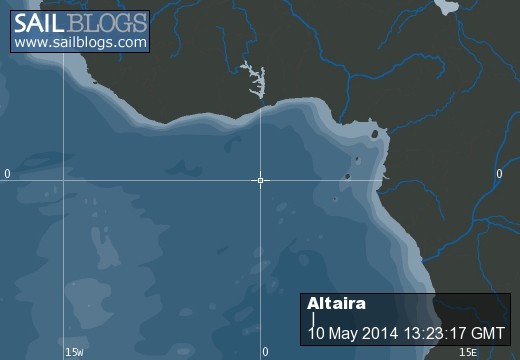Profile

Who: Kimball Corson. Text and Photos not disclaimed or that are obviously not mine are copyright (c) Kimball Corson 2004-2016
Port: Lake Pleasant, AZ
Altaira Wandering the Oceans
Favorites
- 7 Seas Cruising Association
- American Sailing Association
- Buoyweather Service
- CDC Traveler's Heath Advisories
- Cruiser Log venue
- Cruisers Forum
- Cruising Club of America
- Cruising Resources
- Cruising World Magazine
- Earthrace World Record
- Economic and Financial Indicators
- Economist Magazine
- Equipmment and Boat Reviews
- Float Plan Form
- Greenpeace Int'l
- Grib File Access
- Heavy Weather Sailing
- IMS Certificates
- Inland Travel: Expedia
- Intrade Prediction Markets
- Latitude 38
- London Financial Times
- Marine Books and Charts
- Marine Radios
- Nature Conservancy for Oceans
- New York Times
- NOAA Hurricane Analysis
- NOAA Weather Forecasts
- Noonsite, World Cruisng Info
- Ocean Cruising Club
- Overseas Mail Forwarding Services
- Practical Sailor Magazine
- RGE Economic Monitor
- Sail Gear Source I
- Sail Gear Source II
- Sail Gear Source III
- Sail Gear Source IV
- Sailboat Selection for Offshore Use
- Sailboats for Sale
- Sailing Items Sources Links
- SailMail (Marine Radio)
- Sailnet Sailing Information
- Seeking Alpha
- Tide & Current Program
- Tide Prediction Programs
- Tides & Currents
- TruthDig in the News
- U.S. Sailing Association
- Univ of Chicago Law Faculty Blog
- US State Dept Travel Advisories
- Voyage Planning (with pilot charts)
- Wall Street Journal
- Washington Post
- Weather.com
- Weather: MagicSeaweed
- Weather: Wetsand
- WinLink (Ham Radio)
- World Clock + Time Zones
09 April 2018 | Pago Pago, American Samoa
10 March 2018 | Pago Pago, American Samoa
10 March 2018 | Pago Pago, American Samoa
10 March 2018 | Pago Pago, American Samoa
22 August 2017 | Pago Pago, American Samoa
22 August 2017 | Pago Pago, American Samoa
22 August 2017 | Pago Pago, American Samoa
22 August 2017 | Pago Pago, American Samoa
22 August 2017 | Pago Pago, American Samoa
22 August 2017 | Pago Pago, American Samoa
22 August 2017 | Pago Pago, American Samoa
22 August 2017 | Pago Pago, American Samoa
22 August 2017 | Pago Pago, American Samoa
22 August 2017 | Pago Pago, American Samoa
22 August 2017 | Pago Pago, American Samoa
22 August 2017 | Pago Pago, American Samoa
22 August 2017 | Pago Pago, American Samoa
22 August 2017 | Pago Pago, American Samoa
22 August 2017 | Pago Pago, American Samoa
09 August 2017 | Pago Pago, American Samoa
The Three Schools of Economic Thought
22 December 2016 | Pago Pago, American Samoa
Kimball Corson
Post-Keynesian economists are united in maintaining that Keynes' theory is seriously misrepresented by the two other principal Keynesian schools. The theoretical foundation of post-Keynesian economics is the principle of effective demand, that Say's law does not apply because of liquidity preferences and hoarding, so that a competitive market economy has no natural or automatic tendency towards full employment at all. It is the dominant working school of economics.
Neo-Classical Keynesian Economics or Neo- Keynesian Economics is the IS-LM Keynesian graphical orthodoxy, merged with neoclassical micro economics to form a neoclassical synthesis which too largely still believes the interest rate is the equilibrating mechanism that leads us to full employment. It was dominate in the 50's and 60's and is still the core of mainstream economics taught in most economics departments today through first year graduate school. It was largely what I was taught along with all of Friedman's criticisms of it and his monetarism at Chicago.
New Keynesian Economics, strives to provide the aggregating micro economic foundations for Keynesian economics, but it ignores far too much of Keynesianism, including most all of the things the Post Keynesians focus on. It has been the dominant mathematical and statistical cutting edge in macroeconomics since the 1980s. Chicago is at the vanguard here, focusing on Dynamic Stochastic General Equilibrium modeling as a branch of applied general equilibrium theory which Post Keynesians in the Minsky tradition deny even exists.
Post-Keynesian Economics can be seen as an attempt to rebuild economic theory in the light of Keynes' stronger and more useful ideas and insights. However, post-Keynesians cannot always agree on which those are and much current post-Keynesian thought cannot much be found in Keynes very easily at all. Some post-Keynesians focus more on income and wealth distributional issues, some on what Hyman Minsky has added to Keynes, and some go beyond the theory of continuing disequilibria to theories of growth, trade and development in which liquidity preferences play a key role.
Most all agree that Neo-Classical Keynesian Economics or Neo-Keynesian Economics of the 50's and 60's is dated, not very predicatively useful, but is a good teaching first approximation. The Post Keynesians argue that the New Keynesians are playing with modeling toys and throwing too much of the baby out with the bath water and the New Keynesian counter that without micro economic foundations for Keynesianism, we will never get anywhere.
In Neo-Classical Keynesian Economics or Neo-Keynesian Economics when interest rates failed to provide equilibrium, adherents now say continuing disequilibria are caused by the forces of technology, new preferences, new endowments and and the like, recognizing equilibrium is unlikely and they focused on those as reasons why.
In the field of monetary theory, post-Keynesian economists were the first to explain that the money supply responds to the demand for bank credit, so that the central bank or the Fed cannot directly get control of the quantity of money as Friedman hoped, but can only manage the federal funds interest rate and make secondary bond purchases and sales to thereby indirectly control the quantity of monetary reserves in the banking system. Post Keynesians have been at the vanguard of monetary theory. New Keynesianism all but ignores it.
Post Keynesians also understand the role of uncertainty as it bears on liquidity preferences and the demand for cash and near cash and the role of hoarding. Modern Monetary Theory is a relatively recent offshoot of Post Keynesianism, which was already well oriented toward many such aspects of monetary theory, and the influences of Hyman Minsky, of functional finance and of chartalism
You will never guess toward which school my sympathies lie.
Neo-Classical Keynesian Economics or Neo- Keynesian Economics is the IS-LM Keynesian graphical orthodoxy, merged with neoclassical micro economics to form a neoclassical synthesis which too largely still believes the interest rate is the equilibrating mechanism that leads us to full employment. It was dominate in the 50's and 60's and is still the core of mainstream economics taught in most economics departments today through first year graduate school. It was largely what I was taught along with all of Friedman's criticisms of it and his monetarism at Chicago.
New Keynesian Economics, strives to provide the aggregating micro economic foundations for Keynesian economics, but it ignores far too much of Keynesianism, including most all of the things the Post Keynesians focus on. It has been the dominant mathematical and statistical cutting edge in macroeconomics since the 1980s. Chicago is at the vanguard here, focusing on Dynamic Stochastic General Equilibrium modeling as a branch of applied general equilibrium theory which Post Keynesians in the Minsky tradition deny even exists.
Post-Keynesian Economics can be seen as an attempt to rebuild economic theory in the light of Keynes' stronger and more useful ideas and insights. However, post-Keynesians cannot always agree on which those are and much current post-Keynesian thought cannot much be found in Keynes very easily at all. Some post-Keynesians focus more on income and wealth distributional issues, some on what Hyman Minsky has added to Keynes, and some go beyond the theory of continuing disequilibria to theories of growth, trade and development in which liquidity preferences play a key role.
Most all agree that Neo-Classical Keynesian Economics or Neo-Keynesian Economics of the 50's and 60's is dated, not very predicatively useful, but is a good teaching first approximation. The Post Keynesians argue that the New Keynesians are playing with modeling toys and throwing too much of the baby out with the bath water and the New Keynesian counter that without micro economic foundations for Keynesianism, we will never get anywhere.
In Neo-Classical Keynesian Economics or Neo-Keynesian Economics when interest rates failed to provide equilibrium, adherents now say continuing disequilibria are caused by the forces of technology, new preferences, new endowments and and the like, recognizing equilibrium is unlikely and they focused on those as reasons why.
In the field of monetary theory, post-Keynesian economists were the first to explain that the money supply responds to the demand for bank credit, so that the central bank or the Fed cannot directly get control of the quantity of money as Friedman hoped, but can only manage the federal funds interest rate and make secondary bond purchases and sales to thereby indirectly control the quantity of monetary reserves in the banking system. Post Keynesians have been at the vanguard of monetary theory. New Keynesianism all but ignores it.
Post Keynesians also understand the role of uncertainty as it bears on liquidity preferences and the demand for cash and near cash and the role of hoarding. Modern Monetary Theory is a relatively recent offshoot of Post Keynesianism, which was already well oriented toward many such aspects of monetary theory, and the influences of Hyman Minsky, of functional finance and of chartalism
You will never guess toward which school my sympathies lie.
Comments
| Vessel Name: | Altaira |
| Vessel Make/Model: | A Fair Weather Mariner 39 is a fast (PHRF 132), heavily ballasted (43%), high-aspect (6:1), stiff, comfortable, offshore performance cruiser by Bob Perry that goes to wind well (30 deg w/ good headway) and is also good up and down the Beaufort scale. |
| Hailing Port: | Lake Pleasant, AZ |
| Crew: | Kimball Corson. Text and Photos not disclaimed or that are obviously not mine are copyright (c) Kimball Corson 2004-2016 |
| About: | |
| Extra: |
Altaira's Photos - Main
No items in this gallery.
Profile

Who: Kimball Corson. Text and Photos not disclaimed or that are obviously not mine are copyright (c) Kimball Corson 2004-2016
Port: Lake Pleasant, AZ
Altaira Wandering the Oceans
Favorites
- 7 Seas Cruising Association
- American Sailing Association
- Buoyweather Service
- CDC Traveler's Heath Advisories
- Cruiser Log venue
- Cruisers Forum
- Cruising Club of America
- Cruising Resources
- Cruising World Magazine
- Earthrace World Record
- Economic and Financial Indicators
- Economist Magazine
- Equipmment and Boat Reviews
- Float Plan Form
- Greenpeace Int'l
- Grib File Access
- Heavy Weather Sailing
- IMS Certificates
- Inland Travel: Expedia
- Intrade Prediction Markets
- Latitude 38
- London Financial Times
- Marine Books and Charts
- Marine Radios
- Nature Conservancy for Oceans
- New York Times
- NOAA Hurricane Analysis
- NOAA Weather Forecasts
- Noonsite, World Cruisng Info
- Ocean Cruising Club
- Overseas Mail Forwarding Services
- Practical Sailor Magazine
- RGE Economic Monitor
- Sail Gear Source I
- Sail Gear Source II
- Sail Gear Source III
- Sail Gear Source IV
- Sailboat Selection for Offshore Use
- Sailboats for Sale
- Sailing Items Sources Links
- SailMail (Marine Radio)
- Sailnet Sailing Information
- Seeking Alpha
- Tide & Current Program
- Tide Prediction Programs
- Tides & Currents
- TruthDig in the News
- U.S. Sailing Association
- Univ of Chicago Law Faculty Blog
- US State Dept Travel Advisories
- Voyage Planning (with pilot charts)
- Wall Street Journal
- Washington Post
- Weather.com
- Weather: MagicSeaweed
- Weather: Wetsand
- WinLink (Ham Radio)
- World Clock + Time Zones
